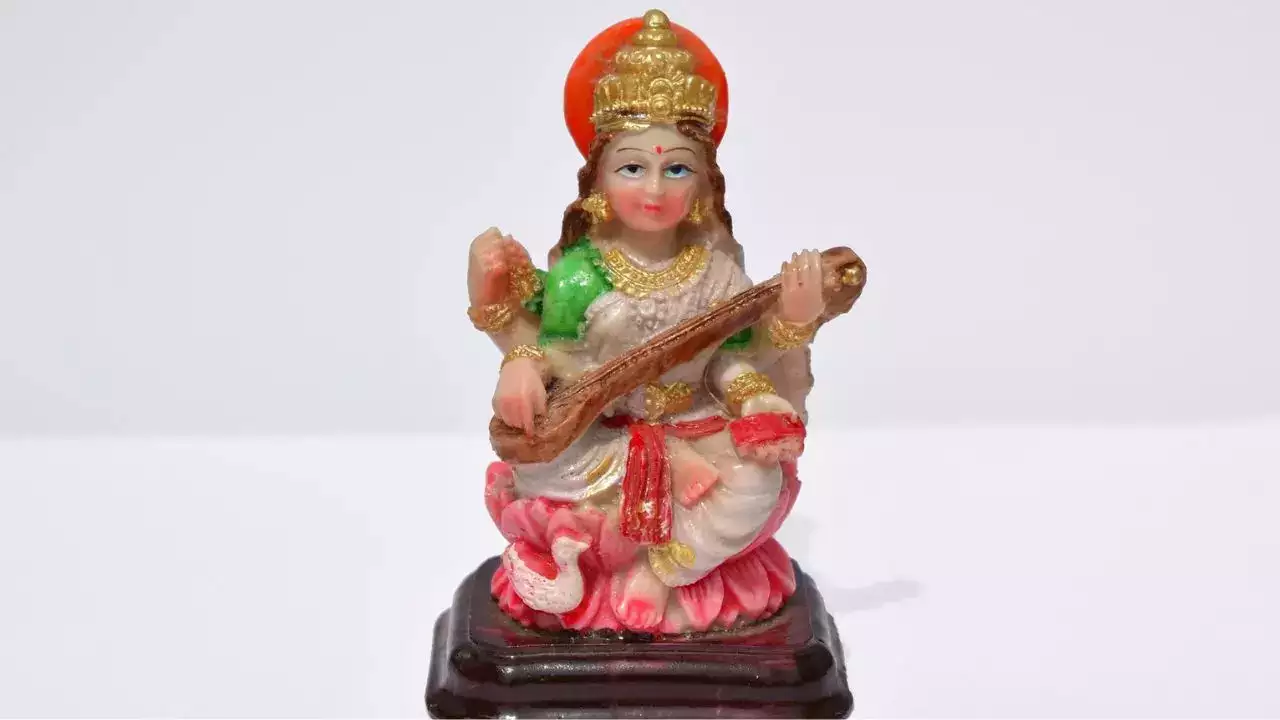
History of Saraswati Puja
According to Hindu texts, the history of Saraswati Puja is associated with Brahma Vaivarta Purana. Lord Krishna granted Goddess Saraswati a boon that she would be worshipped along with the other deities on Vasant Panchami.
History of Saraswati PujaThe mention of the deity Saraswati is found in the medieval and ancient Indian literature between the years 1000BC to 1500 A.D. The importance and the significance of the Goddess Saraswati are seen right from the Vedic era up to modern age. In the epic Mahabharata of the Hindu culture the Goddess of learning is known as the mother of Vedas in the Shanti Parva. She is also known to be the celestial being that appeared at the time of creation of the universe by Lord Brahma. She is believed to be an inherent part of the Devi Mahatma mythology. She forms an integral part of the trinity of the three Goddesses Mahlakshmi, Mahasaraswati and Mahaparvati.
These divine forms assist the trinity of Vishnu, Shiva and Brahma in the recycle, regeneration and the maintenance of the universe. In the book named Taittiriya Brahmana, Saraswati Goddess is referred to as the mother of mellifluous music and fluent speech. She is known to be the deity of purifying and healing powers and flowing rivers in Rigveda Book 10. In the Hindu Vedic literature, the Goddess is given the same importance as that of river Ganges. She is eulogized in the Book 10 of Rigveda as the “epitome of knowledge.” Her importance grows from the Vedas, written after Rigveda. In the Dharma shastras or scriptures and the Upanishads the deity is called on in prayers to remind readers to contemplate on virtuous emoluments.

- Significance of Basant Panchami
- Yellow Theme
- Basant Panchami in Schools and Educational Institutions
- Traditional Food and Sweets
- Kite Flying Festival
- Basant Panchami in Different States
- Social and Environmental Aspects
- History of Saraswati Puja
- Saraswati Puja Items
- Saraswati Puja Rituals
- Saraswati Puja Mantra
- Saraswati Puja Gifts
- Saraswati Puja Greetings
- Saraswati Puja Cards
- Saraswati Puja Aarti
- Different Names of Maa Saraswati
- Saraswati Vrat Katha
- Saraswati Puja Essays
- Story of Saraswati Maa
- Birthday Present Ideas






